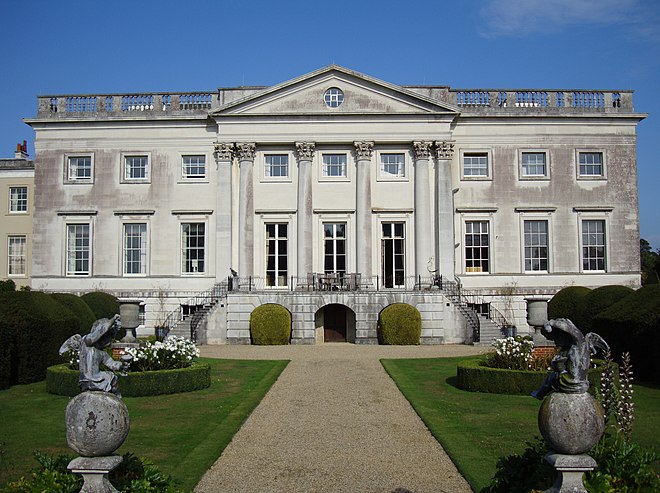If you’ve ever wondered where Elizabeth I lived, or you want to find out more about the places that the famous English queen spent her life, then we can help you follow in her footsteps. There are a number of fascinating places that are linked to Elizabeth’s life, including Kenilworth Castle, the former residence of her beloved Robert Dudley, The Tower of London, where she was once imprisoned, to Hatfield House, which was her childhood home. Take a look at our selection below.
Penshurst Place
Penhurst Place in Kent, England, is a medieval fortified manor house which remains one of the best preserved of its kind in the UK.
Originally built in 1341 for Sir John de Pulteney, the Lord Mayor of London, the house has been altered several times through the centuries although the majority of what can still be seen today retains these early medieval and later Tudor-era roots. Penshurst played host to a number of royal guests over the years, including Henry VIII, Elizabeth I and James I.

Kenilworth Castle
Kenilworth Castle is a former medieval stronghold and royal palace, most famed as the home of Elizabeth 1st’s beloved Robert Dudley. It was King Henry I’s treasurer, Geoffrey de Clinton, who built the vast Norman keep of Kenilworth Castle in the 1120s which can still be seen there today.
Yet, it was under Elizabeth that Kenilworth had its heyday. The property of Robert Dudley, Earl of Leicester from 1563, Kenilworth was something of a token of love in architecture. Dudley, who is renowned as the Queen’s one true love, made extensive changes to the castle to make it fit for his queen and her entourage, doing everything from refitting and remodelling to adding new buildings, all on a lavish scale.

Ashridge
With a history dating back over 700 years, Ashridge House in Hertfordshire has been lived in by King Henry VIII and Elizabeth I as well as having served as a wartime hospital.
In 1283, Edmund, Earl of Cornwall, founded a monastic house for the Bonhommes order called ‘The College of Bonhommes’ at ‘Assherugge’. The monastery was re-endowed by Edward the Black Prince and gained a reputation as a centre for scholarly excellence and learning. The college of monks was dissolved during the Reformation. Afterwards, in 1539, Henry VIII bestowed the estate on Princess Elizabeth, later Elizabeth I. Elizabeth spent 8 years at Ashridge, and it was there that she was arrested by her half-sister Mary in 1554 and taken to the Tower of London.

Cowdray House Ruins
Devastated by fire in the late 18th century, the ruins of Cowdray House are one of England’s most important Tudor houses, and today are Grade I listed due to their historical importance and beauty.
In 1533, Henry VIII granted a licence for the house to undergo fortification, and for a park to be built, after which 600 acres of meadow, pasture, and woodland were constructed at the site. Henry VIII is known to have visited Cowdray House in 1538, 1539, and 1545. Though her father may have held Sir Anthony in high regard, Elizabeth I was not so kind, placing Sir Anthony on house arrest at the time of the Spanish Armada in 1588 due to his Catholic faith. Her stance softened, however, since she visited Cowdray herself in 1591.

The Tower of London
The Tower of London is a famous fortress and prison where Elizabeth I was imprisoned by her half-sister Mary I. Originally known as the White Tower, it was commissioned by the first Norman king, William the Conqueror and was designed as a fortress-stronghold, a role that remained unchanged right up until the late 19th century. Elizabeth was imprisoned here by her half-sister Mary I. She sat on the steps by the watergate and wept. She was later forgiven and released.

Old Gorhambury House
Set in picturesque countryside, Old Gorhambury House is a Tudor mansion built from 1563 to 1568, which gained repute as the home of the Lord Keeper Sir Nicholas Bacon and later his celebrated son Sir Francis. Like many clerical properties in Tudor England, shortly after its construction Old Gorhambury’s future was plunged into uncertainty. With the Dissolution of Monasteries and Chantries first under the great Tudor King Henry VIII, and later pursued more rigorously by his son the Protestant boy king Edward VI, the mansion looked set to fall into disuse.

Bath Abbey
Bath Abbey was built from the late fifteenth century, destroyed by Henry VIII and restored under Elizabeth I. Today, visitors can climb the 212 steps of Bath Abbey’s tower, stand behind its clock face and enjoy fantastic views of the city. Tours are available, lasting approximately 45-50 minutes.

